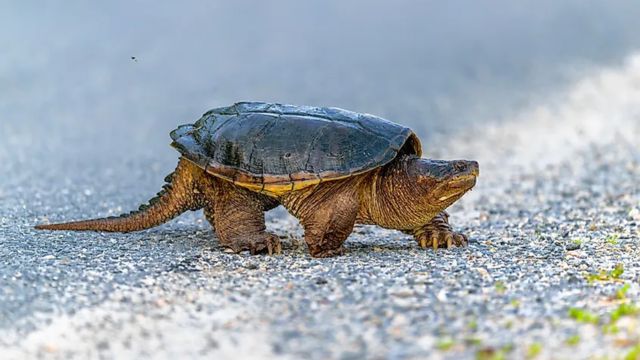Ohio, known for its vibrant natural landscapes and rich biodiversity, is also home to several species that pose significant risks to humans. Understanding these creatures’ behaviors and habitats can help ensure safe and respectful coexistence with the local wildlife. Here’s a look at the 13 deadliest animals in Ohio and what you should know to navigate encounters with them effectively.
Brown Recluse Spider
The brown recluse spider, often found in undisturbed corners of homes and outbuildings, packs a venomous bite that can lead to serious medical conditions like necrosis. Known for its violin-shaped marking on the back, this spider is typically non-aggressive and bites only when threatened.
Copperhead Snake
Copperheads are common in Ohio’s wooded areas and occasionally wander into suburban settings. Recognizable by their distinctive hourglass banding, these snakes deliver a venomous bite that, while rarely fatal, requires immediate medical attention.
Bobcat
Once thought extinct in Ohio, bobcats have rebounded, particularly in the state’s southeastern regions. These elusive felines generally avoid human contact but can become aggressive if cornered or threatened.
Timber Rattlesnake
Favoring Ohio’s forests and wetlands, the timber rattlesnake is a venomous species known for its characteristic rattling warning. While generally reserved, they will strike if provoked, injecting potent venom that can be life-threatening.
Snapping Turtle
Ohio’s lakes and rivers are home to the snapping turtle, a large reptile with a powerful bite. Though they prefer to avoid human interaction, they can become defensive if disturbed, posing risks to unwary swimmers or handlers.
Black Widow Spider
The infamous black widow resides in dark, undisturbed spaces around homes and gardens. Its bite delivers a neurotoxin that can cause severe pain and muscle spasms, requiring urgent medical treatment.
Wild Boar
Invasive in Ohio, wild boars are aggressive creatures that can cause significant environmental damage and pose risks to humans and pets. Encounters are uncommon but can be dangerous due to their unpredictable nature.
Eastern Massasauga Rattlesnake
This small, venomous snake inhabits Ohio’s wetlands, delivering a toxic bite that can lead to intense pain and medical complications. Though shy and rare, it is one of the state’s venomous snakes that merits caution.
Kissing Bug
The kissing bug, a carrier of Chagas disease, feeds on human blood, often around the face and lips. These nocturnal insects can transmit the Trypanosoma cruzi parasite, leading to serious chronic health issues.
Black-legged Tick
Common in wooded and grassy areas of Ohio, the black-legged tick transmits Lyme disease. Vigilance and prompt removal are essential to prevent this serious tick-borne illness.
White-tailed Deer
Though not directly aggressive, white-tailed deer pose significant risks through vehicle collisions, particularly during mating season when deer are more active and likely to cross roads.
American Black Bear
Though rare in Ohio, encounters with black bears are increasing as populations recover. These large mammals can be dangerous if provoked, particularly when they venture close to human habitats in search of food.
Fire Ant
The fire ant delivers a painful sting that can lead to allergic reactions in sensitive individuals. Found primarily in the southern parts of the state, these ants are aggressive and can attack en masse if their nests are disturbed.
Conclusion
While the presence of these animals might seem daunting, negative encounters are relatively rare and typically occur when animals feel threatened or provoked. By staying informed and respecting wildlife boundaries, Ohioans and visitors can safely enjoy the state’s rich natural offerings.
Remember, wildlife encounters, while potentially dangerous, are also opportunities to appreciate the diversity and resilience of Ohio’s native species. Always approach nature with respect and caution, and seek immediate medical attention if you encounter any of the dangers listed above.

